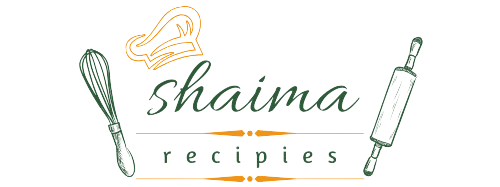The term “mother sauces” might sound like something reserved for chefs in professional kitchens, but they’re actually the building blocks of countless everyday meals. Learn just one or two, and you’ll instantly start cooking with more flavor, flexibility, and confidence — no culinary school required.
If you can stir butter and flour together, you can master a basic sauce. Start with simple versions of béchamel or tomato sauce and you’ll quickly see how these foundational techniques transform plain ingredients into something deeply satisfying. The mother sauces aren’t just tradition — they’re practical tools every home cook should have up their sleeve.
Table of Contents
Why Start with Sauce?

Sauces aren’t just “extras.” They’re what turn basic ingredients into something that feels like a real meal. A plain chicken breast becomes comforting with a creamy béchamel. Roasted veggies get brighter with a spoonful of tomato sauce. Even dry rice or day-old pasta gets revived with a good sauce.
Sauces also help you fix mistakes — overcooked meat, underseasoned grains, or plain vegetables can be saved with a spoonful of the right sauce. They stretch leftovers, elevate cheap ingredients, and make you feel like you know what you’re doing — even if you don’t (yet).
Meet the Five Mother Sauces
Most sauces in Western cooking come from just five core types — known as the “mother sauces.” You don’t need to memorize them, but knowing what they are helps you see patterns in recipes and gives you a framework to build your own.
Béchamel — A white sauce made from butter, flour, and milk. Think mac and cheese, lasagna, casseroles, or even gravy.

Tomato Sauce — Crushed tomatoes cooked with olive oil, garlic, and herbs. This is the classic base for pasta, pizza, or shakshuka.

Velouté — Similar to béchamel, but made with stock instead of milk. It’s silky, savory, and great with poultry or fish.
Espagnole — A dark, rich sauce made from brown stock, tomato paste, and a vegetable base (called mirepoix). It’s often used for gravies or stews with depth.
Hollandaise — A creamy emulsion of egg yolks, butter, and lemon juice. It’s used for brunch dishes like eggs Benedict or to dress up steamed vegetables.
For beginner cooks, béchamel and tomato sauce are by far the easiest and most useful to start with. The others can come later, once you feel more confident.
How to Start (Without Breaking a Sweat)

Start with Béchamel
You’ll need:
- 2 tablespoons butter
- 2 tablespoons flour
- 1½ cups warm milk
- Salt, pepper, and optional nutmeg or cheese
How to do it:
- Melt the butter in a saucepan over medium heat.
- Add flour and whisk constantly to form a paste — this is your roux. Cook it for about 2 minutes (it should smell a little nutty).
- Slowly whisk in the warm milk. Start with a little, whisk until smooth, then add more.
- Keep whisking until the sauce thickens. Season with salt, pepper, and optionally a pinch of nutmeg or grated cheese.
What it’s good for: Mac and cheese, baked pasta, creamy casseroles, veggie gratins, or even as a white pizza sauce.
Then Try a Simple Tomato Sauce
You’ll need:
- 1–2 tablespoons olive oil
- 2 garlic cloves (sliced or minced)
- 1 can (14 oz) crushed or diced tomatoes
- Salt, pepper, dried basil or oregano to taste
How to do it:
- Heat oil in a pan over medium heat. Add garlic and sauté for 30 seconds.
- Pour in the tomatoes. Stir and season with salt, pepper, and herbs.
- Let it simmer gently, uncovered, for 15–20 minutes. Stir occasionally.
What it’s good for: Pasta, pizza, baked eggs, meatballs, dipping bread — pretty much anything.
You now have two sauces that can be made with pantry ingredients in under 30 minutes, without any special skills.
What’s the Easiest One to Learn First?
Start with béchamel. It teaches you how to make a roux (flour + fat), which is the base for tons of other sauces. Once you’re confident making it, you can adapt it into cheese sauces, creamy gravies, or even light soups.
Tomato sauce is next — it’s slightly more forgiving and easy to tweak. You can add onion, red pepper flakes, butter, or fresh herbs depending on your taste or what’s in your kitchen.
Don’t try to learn all five sauces at once. Just pick one, make it a few times, and get it into your rotation.

FAQs
What’s a roux and why is it important?
A roux is a cooked mixture of flour and fat (usually butter) that thickens sauces. Béchamel, velouté, and Espagnole all start with a roux. It creates a creamy texture without clumps.
Do I need fancy stock or ingredients to make these?
Not at all. Store-bought broth, canned tomatoes, and everyday butter and milk are all you need. Use what you have — technique matters more than ingredients.
What if my sauce is lumpy or too thick?
If it’s lumpy, keep whisking — you may have added liquid too fast. If it’s too thick, slowly add more liquid (milk, stock, or tomato juice). Warm liquid blends better than cold.
Can I use plant-based milk for béchamel?
Yes, but choose unsweetened and unflavored types (like oat or soy). Be aware the taste and texture will vary slightly, but it still works.
Conclusion
Mastering the mother sauces isn’t about becoming a chef. It’s about giving yourself the power to turn plain food into something better — richer, more flavorful, more flexible. These sauces teach you timing, texture, seasoning, and the satisfaction of making something real from scratch.
Start simple. Stir often. Taste as you go. These sauces aren’t just French traditions — they’re practical skills every home cook should have in their back pocket.
here’s another sauce to try out : Easy Creamy Garlic Sauce Baby Potatoes
How was this recipe to you ?
There are no reviews yet. Be the first one to write one.

